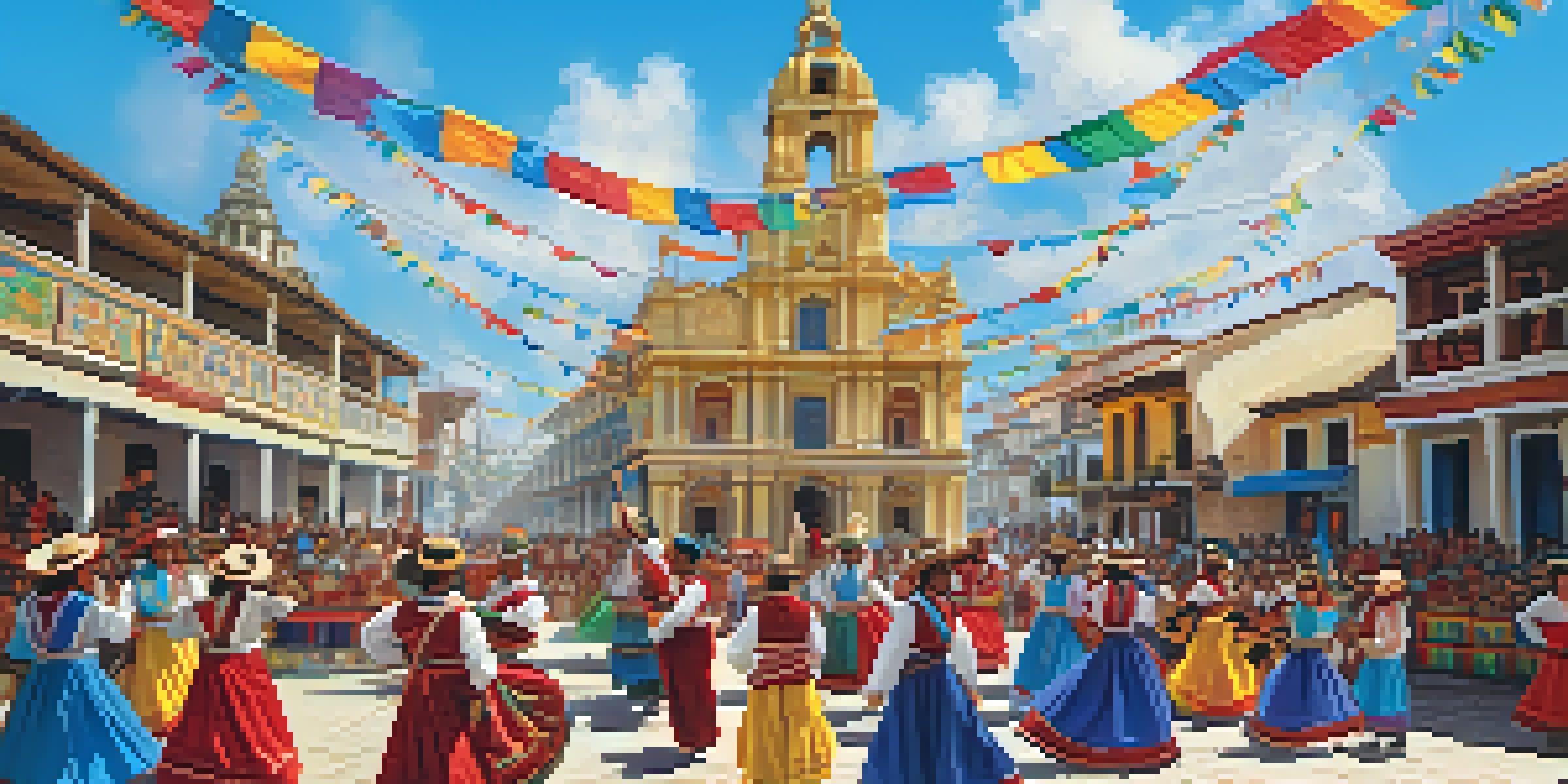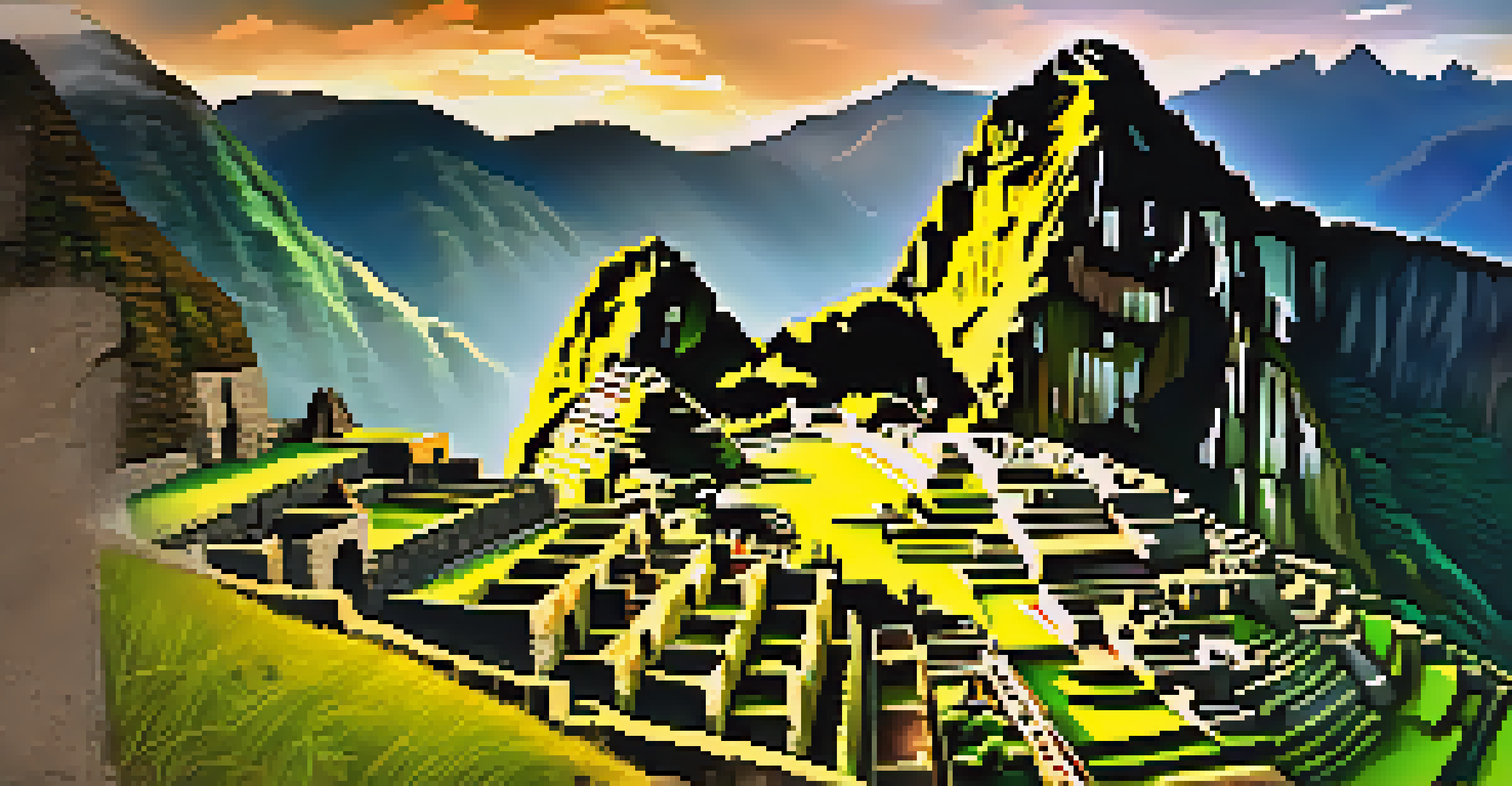Government Policies Supporting Peru's Cultural Heritage

Understanding Peru's Rich Cultural Heritage
Peru is a vibrant tapestry of cultures, languages, and traditions, woven together over centuries. From the ancient Incan civilization to the diverse indigenous communities today, this heritage is a source of national pride. Recognizing the importance of this cultural wealth, the government has taken significant steps to preserve it for future generations.
Cultural heritage is the legacy of physical artifacts and intangible attributes of a group or society that are inherited from past generations.
Cultural heritage in Peru is not just about historic sites; it also includes traditional music, art, and festivals that reflect the country’s multifaceted identity. These elements play a crucial role in fostering a sense of belonging among Peruvian citizens. As such, protecting and promoting this heritage has become a national priority.
With a growing interest in cultural tourism, Peru's government aims to ensure that this heritage remains intact while also contributing to the economy. By implementing supportive government policies, they are creating pathways for sustainable development that honors the past.
Legislation Protecting Cultural Heritage
The Peruvian government has enacted a variety of laws aimed at safeguarding its cultural heritage. One key piece of legislation is the Law of Cultural Heritage (Ley de Patrimonio Cultural), which sets forth guidelines for the protection and preservation of historical sites and artifacts. This law not only recognizes the significance of cultural heritage but also imposes penalties for violations.

In addition to legal frameworks, the government actively engages in monitoring and managing cultural sites to prevent degradation. For example, the Ministry of Culture oversees various initiatives that focus on archaeological sites, museums, and traditional practices. These efforts are crucial in maintaining the integrity of Peru’s cultural legacy.
Preserving Peru's Cultural Richness
The Peruvian government prioritizes the protection of its diverse cultural heritage through legislation and community involvement.
Moreover, the government collaborates with local communities to raise awareness about the importance of preserving cultural heritage. By involving citizens in the process, they foster a sense of ownership and responsibility, ensuring that heritage protection extends beyond mere legislation.
Funding and Support for Cultural Projects
Financial support is essential for the preservation of cultural heritage, and the Peruvian government has established various funding mechanisms. Grants and subsidies are available for projects that promote cultural conservation and development, allowing local communities to engage in heritage-related activities. This financial backing is vital for grassroots initiatives that may otherwise struggle to find resources.
Heritage is our legacy from the past, what we live with today, and what we pass on to future generations.
In addition to direct funding, the government often partners with international organizations and NGOs to enhance cultural projects. These collaborations bring in additional resources and expertise, creating a more robust framework for heritage preservation. By leveraging these partnerships, Peru can amplify its efforts in protecting cultural assets.
The impact of this funding can be seen in numerous successful projects across the country. From restoring historic buildings to revitalizing traditional crafts, government support plays a pivotal role in maintaining the vibrancy of Peru’s cultural landscape.
Promoting Cultural Tourism as a Heritage Strategy
Cultural tourism is a powerful tool for promoting and preserving Peru's heritage. The government actively encourages travelers to explore the rich history and diverse cultures of the nation, believing that increased visitor interest can drive investment in preservation efforts. This strategy not only boosts the economy but also raises awareness about the importance of cultural heritage.
The development of tourist circuits that highlight cultural landmarks forms a critical part of this approach. By creating itineraries that include museums, archaeological sites, and traditional festivals, the government showcases the depth of Peru's cultural offerings. This not only attracts visitors but also educates them about the significance of these sites.
Cultural Tourism as Economic Strategy
By promoting cultural tourism, Peru aims to boost the economy while raising awareness about its rich cultural assets.
Moreover, the government promotes responsible tourism practices, emphasizing the need for visitors to respect local customs and traditions. By fostering a culture of respect and appreciation, Peru aims to create a sustainable tourism model that benefits both the economy and cultural heritage.
Community Involvement in Heritage Preservation
Community engagement is essential to the success of cultural heritage preservation in Peru. The government recognizes that local communities are the custodians of their cultural heritage and actively involves them in decision-making processes. This collaborative approach ensures that preservation efforts align with the values and needs of the community.
Various programs encourage locals to participate in cultural activities, such as traditional music and dance, arts and crafts, and local festivals. By providing platforms for expression, the government helps to keep these traditions alive and relevant in modern society. This not only enriches the cultural landscape but also strengthens community ties.
Additionally, educational initiatives aimed at younger generations foster an appreciation for their cultural roots. By instilling pride in their heritage, the government ensures that these traditions will continue to thrive, creating a cycle of preservation that spans generations.
International Collaboration in Cultural Heritage
Peru's commitment to cultural heritage extends beyond its borders through international collaboration. The government engages with various global organizations, such as UNESCO, to promote and protect its cultural assets. These partnerships facilitate the exchange of knowledge and resources, enhancing Peru's preservation efforts.
One notable example is the designation of Machu Picchu as a UNESCO World Heritage Site, which has drawn international attention to Peru's rich history. This recognition not only helps in attracting tourists but also emphasizes the importance of conserving such sites for future generations. The government actively works to uphold the standards set by these international bodies.
Community Engagement is Key
Involving local communities in heritage preservation ensures that cultural practices remain relevant and celebrated for future generations.
Through collaborative efforts, Peru can address challenges such as illegal trafficking of artifacts and environmental threats to heritage sites. By working together with other nations and organizations, the Peruvian government strengthens its ability to protect its cultural heritage on a global scale.
The Future of Peru's Cultural Heritage Policies
Looking ahead, the future of Peru's cultural heritage policies hinges on adaptability and innovation. As globalization continues to influence cultural landscapes, the government must balance modernization with the preservation of traditional practices. This requires continuous evaluation and refinement of existing policies to ensure they remain effective.
Emerging technologies also offer new opportunities for heritage preservation. Digital archiving, virtual reality experiences, and social media campaigns can engage younger audiences and promote understanding of Peru’s cultural wealth. By embracing these tools, the government can reach a broader audience and foster a deeper appreciation for its heritage.

Ultimately, the goal is to create a dynamic cultural ecosystem where heritage is not only preserved but also celebrated. By prioritizing sustainable practices and community involvement, the Peruvian government can ensure that its rich cultural heritage continues to thrive for generations to come.